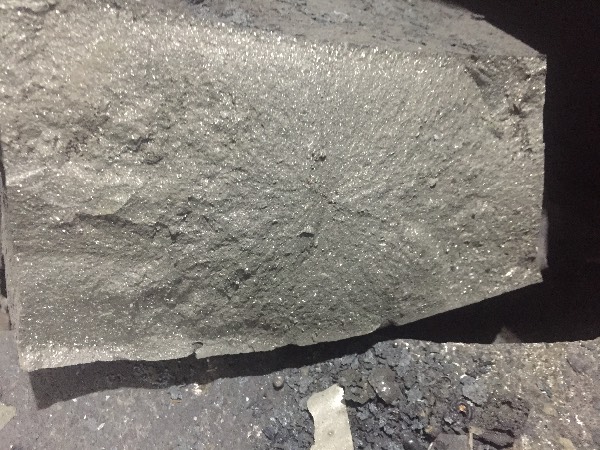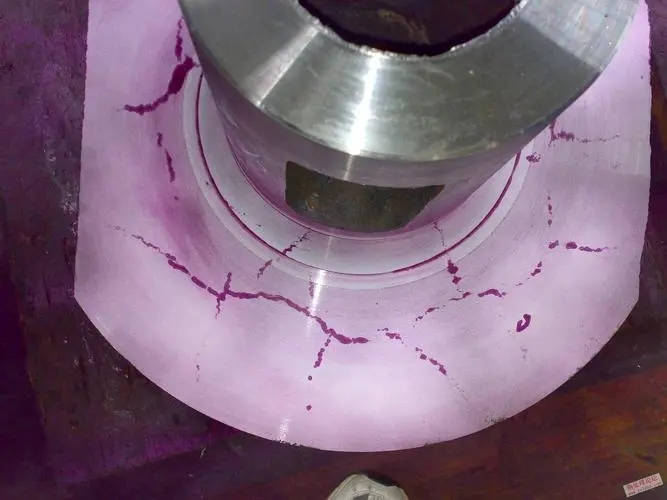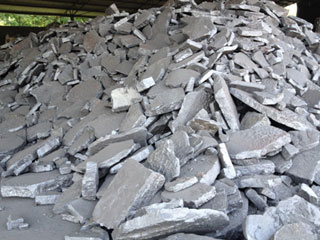Ferrosilicon is used as a deoxidizer in the steelmaking industry
2023-11-27
During the steelmaking process, in order to remove harmful impurities such as carbon and sulfur from the molten iron, oxygen molecules need to be added to the molten iron by blowing oxygen or adding oxidants during the smelting process. Generally speaking: the function of blowing oxygen is to oxidize and react with carbon, silicon, manganese, phosphorus, sulfur and other elements in the molten iron to form gases or oxides with higher melting points, thereby reducing these five impurities that are harmful to the composition of the molten steel. , and use the chemical heat released during the oxidation reaction to increase the temperature of the molten iron.
However, during this process, the oxygen content in the molten steel gradually increases and exists in the molten steel in the form of FeO. If the oxygen in the steel is not removed, the mechanical properties of the cast billet will be poor.
Therefore, after removing impurities from the molten iron, deoxidation is also required. Without deoxidation, the quality of cast steel will be greatly compromised.
In addition, oxygen itself is harmful to steelmaking in many ways.
The harmful effects of oxygen on cast steel are caused by the huge difference in the solubility of oxygen in liquid and solid steel.
The main harmful effects of oxygen on steelmaking are
1. Oxygen is one of the reasons for the formation of pores in steel castings
During the solidification process of molten steel, since the solubility of oxygen decreases significantly with the decrease of temperature, the precipitated oxygen reacts with the carbon in the molten steel, and the generated CO bubbles become pores if they remain in the steel.

2. Oxygen promotes the formation of hot cracks in cast steel
When the oxygen content of the molten steel is too high, the tendency of hot cracking of cast steel will be aggravated. The reason is that when FeO and FeS meet, they form a low melting point (940°C) eutectic (FeO·FeS) and distribute it in the form of a film on the grain boundaries. Easy to cause thermal cracking.

3. Oxygen is one of the main elements that forms non-metallic inclusions
Oxygen can react with various elements to form oxide inclusions. If these inclusions are retained in the steel, they will reduce the performance of cast steel.
Deoxidation requires the addition of elements that combine with oxygen and are easily removed from the molten steel into the slag. According to the binding strength of various elements in molten steel to oxygen, the order from weak to strong is as follows: chromium, manganese, carbon, silicon, vanadium, titanium, boron, aluminum, zirconium, and calcium. Therefore, iron alloys composed of silicon, manganese, aluminum and calcium are commonly used for steelmaking deoxidation.
Why is ferrosilicon an essential deoxidizer in steelmaking?
Due to the strong affinity between silicon and oxygen, when ferrosilicon is added to steelmaking, the following deoxidation reaction occurs:
2FeO+Si=2Fe+SiO₂
Silica is the product of deoxidation. It is lighter than molten steel. It floats on the surface of the steel and enters the slag, thereby removing the oxygen in the steel. It can significantly improve the strength, hardness and elasticity of the steel, increase the magnetic permeability of the steel, and reduce the temperature of the transformer. Hysteresis loss in steel.
Ferrosilicon is mainly used in the following fields:
1. Used as deoxidizer and alloying agent in the steelmaking industry: In order to obtain steel with qualified chemical composition and steel quality, deoxidation must be carried out in the later stages of steelmaking. The chemical affinity between silicon and oxygen is very large, so silicon Iron is a strong deoxidizer for steelmaking and is used for precipitation and diffusion deoxidation. Adding a certain amount of silicon to steel can improve the strength, hardness and elasticity of the steel. Therefore, it is widely used in smelting structural steel (containing 0.40-1.75% silicon), tool steel (containing SiO.30-1.8%), spring steel (containing SiO .40-2.8%) and silicon steel (containing 2.81-4.8% silicon) for transformers, ferrosilicon is also used as an alloying agent. At the same time, the inclusion form reduces the gas element content in the molten steel, which is an effective new technology to improve steel quality, reduce costs, and save iron. It is suitable for the deoxidation requirements of continuous casting molten steel. Practice has proved that ferrosilicon not only meets the deoxidation requirements of steelmaking, but also has desulfurization performance and has the characteristics of large specific gravity and strong penetrating power;
2. Used as inoculant and spheroidizing agent in the cast iron industry: Cast iron is an important metal material in modern industry. It is cheaper than steel, easy to melt and smelt, has good casting performance and much better earthquake resistance than steel. . The mechanical properties of ductile iron are equal to or close to those of steel. Adding a certain amount of ferrosilicon to cast iron can prevent the formation of carbides in the iron and promote the precipitation and spheroidization of graphite. Therefore, in the production of ductile iron, ferrosilicon is an important inoculant (helping to precipitate graphite) and spheroidizing agent. ;
3. Used as reducing agent in ferroalloy production: not only the chemical affinity between silicon and oxygen is very high, but also the carbon content of high-silicon ferrosilicon is very low. Therefore, high-silicon ferrosilicon (or silicon alloy) is a commonly used reducing agent in the ferroalloy industry when producing low-carbon ferroalloys;
4. Other uses: Ground or atomized ferrosilicon powder can be used as a suspended phase in the mineral processing industry. It can be used as a coating for welding rods in the welding rod manufacturing industry. High-silicon ferrosilicon is used in the chemical industry to make products such as silicone.









